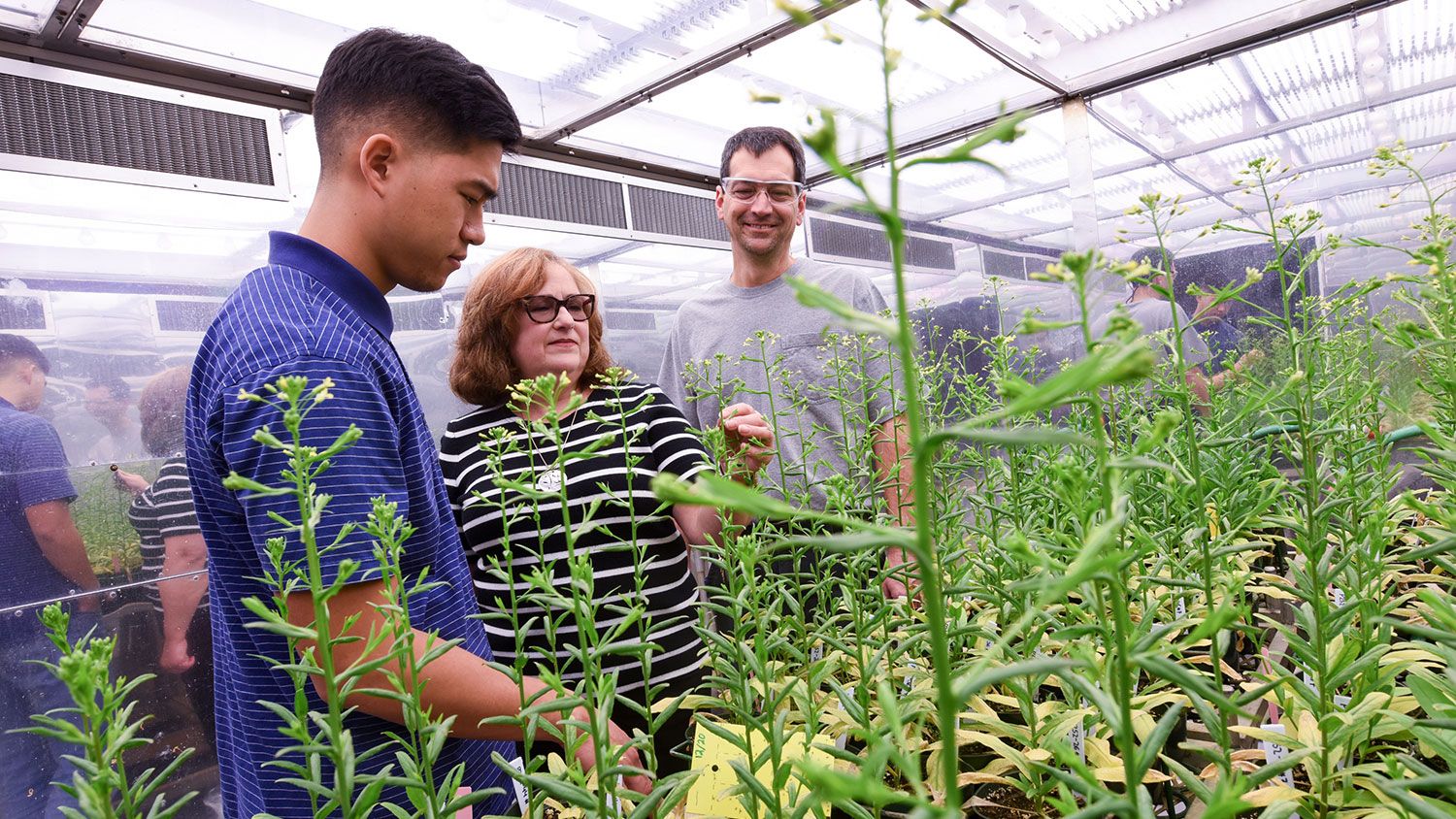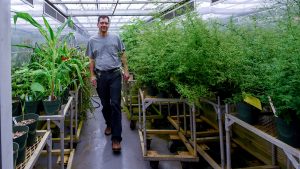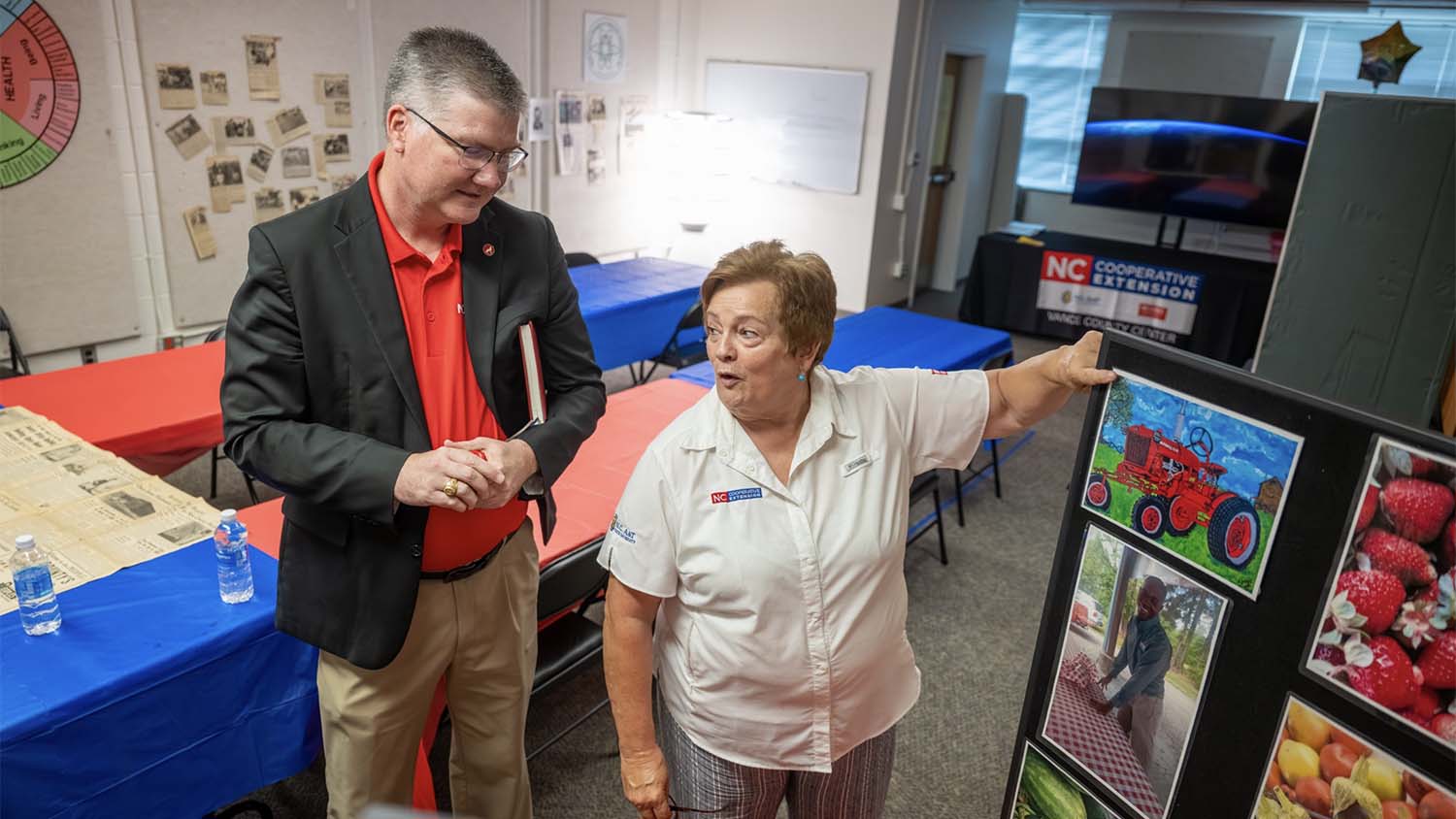Phytotron Stands the Test of Time

Peek into NC State University’s Phytotron and you can get a sense of the breadth and impact of university’s plant research on agriculture, the environment and even transportation and medicine.
Tucked into Gardner Hall, the Phytotron has been called a control freak’s dream. It contains 60 vault-like growth chambers that range from the size of a reach-in cabinet to a walk-in room, plus five greenhouses and a plant transformation laboratory where scientists create genetically modified plants.
In the growth chambers, researchers and their students can make changes both large and small to the temperature, moisture, lighting and atmospheric gases, then study how those changes affect the plants.
It’s a place for every season, says Dr. Carole Saravitz, and for all climates, from arid deserts to tropical rain forests.
Saravitz, the Phytotron director and faculty member in the Department of Plant and Microbial Biology, says that the facility has played a key role in many NC State breakthroughs. Researchers here have found ways to produce artemisia plants with higher levels of a compound used to treat malaria. Gained a better understanding of the potential effects of climate change on urban trees. And shed light on the evolution of the Irish potato famine pathogen.
They are finding ways to modify an oilseed crop so that it can be used to produce jet fuel, studying how saltwater intrusion might affect mangrove trees and looking at ways to clean up soil contaminated by E. coli and other pathogens.
Moreover, they have produced, and continue to produce, a range of new plant varieties – from turfgrasses to agronomic and horticultural crops – with superior traits such as drought tolerance and disease resistance.
When the Phytotron opened in 1968, it was one of the only facilities of its kind in the world, and it’s now one of the largest, spanning four floors.

Part of the College of Agriculture and Life Sciences, the Phytotron is available for use by NC State faculty and students as well as by scientists from government agencies and private industries.
Though it was built the same year NASA launched the first manned Apollo mission, the Phytotron’s technology hasn’t become outdated, Saravitz says. A recent energy conservation project will more than pay for itself in energy savings, while a National Science Foundation grant paid for major upgrades such as the addition of a biosafety-level three greenhouse.
Saravitz adds that the high demand for the Phytotron’s services confirms the need for a new Plant Sciences Research Complex on campus, but it doesn’t mean that the Phytotron will be replaced.
“The great thing is this building is as vital today as it was in 1968. We do different experiments – completely different experiments – but the facility itself and its capabilities remain vital,” she says. “It’s truly a campus gem.”


